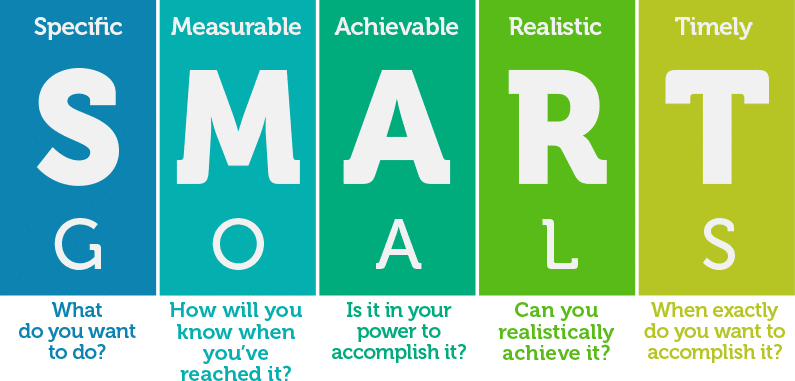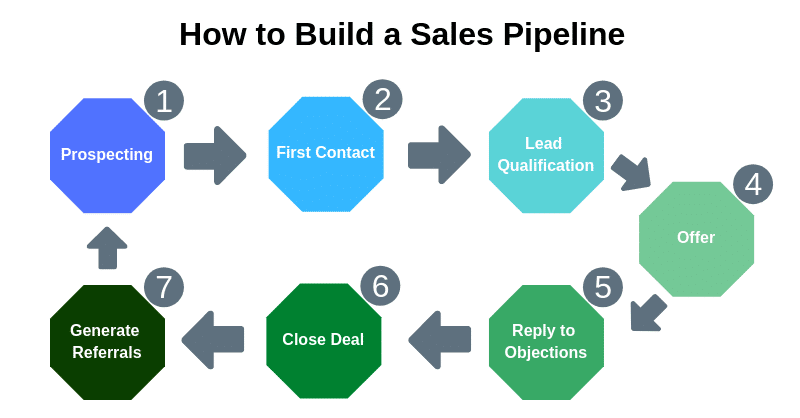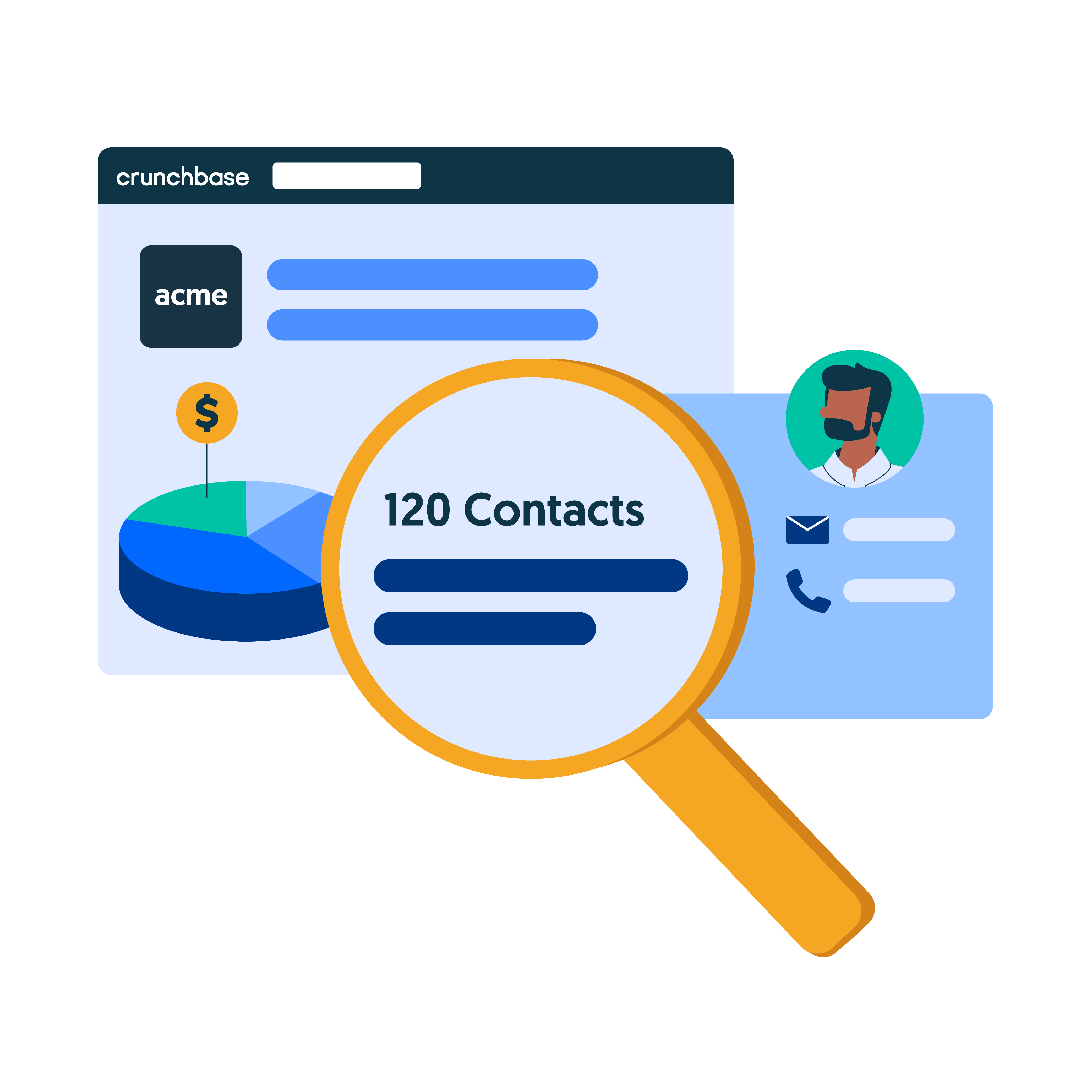There is no question that sales is the driving force of a business. Your sales team directly influences growth and is responsible for bolstering revenue. Thus, it’s essential that your reps effectively manage their sales pipeline in order to meet your company’s sales goals and, ultimately, close deals.
Hit your goals this month with a free trial of Crunchbase Pro
Here is some insight that will help you improve your performance, making it easier to meet sales goals and hit quota.
- How to Establish SMART Sales Goals
- Tips for Improving Sales Performance
- How to Create and Manage Your Sales Pipeline
- Close More Deals With Proper Sales Pipeline Management
- How to Build a Sustainable Sales Pipeline
- Tools to Manage Your Sales Pipeline and Meet Sales Goals
How to establish SMART sales goals
You may very well be familiar with the acronym SMART: Specific, Measurable, Attainable, Realistic, Timely. Creating SMART goals is simple and effective.


You want to have something specific to strive for, such as a revenue mark or a number of leads you want to convert in a given time period. Not only will a defined goal paint a finish line, but it will enable you to track your progress. Goals are meant to be black and white. Sure, you can analyze and reflect on your path to the goal, but, when time is up, did you accomplish it or not? You will know the answer to that question if you set a specific goal.
Numbers are your guiding light when setting goals. They are the measurables that set the bar and leave nothing to the imagination. They can also be adjusted. Say you set out to close 20 deals in the quarter. If the quarter expires and you’ve closed 10 deals, you’ve learned that 20 was a little overzealous. If you closed 30 deals, you weren’t giving yourself enough credit. Either way, you can adjust accordingly to set realistic, more attainable goals for the next quarter. As sales are already numbers-driven, it makes sense to set numbers as the benchmarks. When contemplating goals, ensure they are challenging, but not impossible.
It’s important that your sales goals have time limits as well. Timely achievements help maintain productivity and allow you to properly lay out your tasks moving forward. Once you accomplish one goal, you move onto the next one, and so on and so on. Before you know it, you’ve become a well-rounded salesperson, and meeting your sales quota becomes second nature.
You joined the goal-setting business the moment you signed on to be a salesperson, so be sure to set your goals the right way – the SMART way.
Tips for improving sales performance
When you create and maintain a sales pipeline, you’ll know exactly what stage a potential client is at in the sales process. Here are some tips on improving your performance as a salesperson so you can crush your sales goals:
Create a sales pipeline
Aside from executing sales pitches and product demonstrations, organization may be the most vital quality to successful selling. With a quota at the forefront of your mind, you’re probably acting on leads through emailing, cold calling, follow-ups − every technique or strategy possible. Those actions are necessary, but are you being wise in how and when you’re taking them?
A sales pipeline pinpoints the various stages in the sales process. The terminology may vary per company pipeline. However, each typically covers the same stages: initial contact, lead qualification, demo/presentation, proposal, and close.
In creating a sales pipeline, you’ll know which stage each lead is on. As a result, you’ll be aware of the steps remaining to turn each lead into a closed deal. It helps to have a visual of where each lead is in the process, especially when you’re working with a bunch of them all at one time.
Learn areas of opportunity
We’ll let you in on a little secret: Not every lead is worth your time. Some businesses keep you on a string despite having no intentions of purchasing your product. Some have a genuine interest but place you low on the priority list. Giving up on fizzling leads may seem serious, but there’s certainly no reason to treat them with a sense of urgency.
Rather, turn your focus to a new lead or to prospects that are further along in the pipeline. Those are more promising. You’ll determine in the second stage of your pipeline (lead qualification) whether a lead is worth pursuing.
Note your successes
Nothing is more gratifying as a salesperson than getting someone to ink a deal with your company. But, do you ever retrace your steps and reflect on how you got the job done?
Maybe you nailed a presentation, or perhaps you put just the right amount of pressure on the prospect through strategic follow-up calls. There’s often a rhyme to a reason in sales. Some of it is just pure luck, but most of it has to do with your approach.
Next time you lock in a deal, look back on what you did well and implement those positives as you tackle the next lead.
Close more deals and meet your goals with proper sales pipeline management
Try your best to filter leads to the lower levels of your pipeline. A bottom-heavy pipeline means you have many opportunities to make a sale, as most of your leads are beyond presentation and either ready for proposal or pending commitment from the client.
Your pipeline should always convey:
- The total number of deals in play
- The figures on the line for each deal
- The percentage of deals you’ve closed
- The average lifetime of a deal before closure
All of these should help you set your priorities and keep you alert as to where you are in the sales process. If you’re working to meet your sales goals or quota for the month or quarter, take an aggressive approach with the leads toward the bottom of the pipeline. Execute a follow-up call or visit the prospect in person. See what is delaying a deal and be prepared to negotiate minor details regarding pricing or services.
You should also review the duration of leads and stack them against your average lifetime to closure. Leads that are flirting with a lost cycle should be treated with urgency. Letting them linger in your pipeline will lessen your chances of converting, at least so the metrics indicate. They will also clog your pipeline.
Lead scoring is a great way to separate promising prospects from uncertain ones. The metric takes into account a prospect’s budget, readiness to purchase, desire for a business solution, and authority to sign a contract. The higher the score, the closer you are to a satisfying handshake.
Building a sustainable sales pipeline
The quicker you can close a deal, the better off you are. That’s why building a sustainable sales pipeline is so important.


Regularly update your pipeline
While a sales pipeline helps organize leads, you’ll be doing the model a disservice if you don’t keep it up to date. The sales process is ever-changing. New leads come in and old leads die out. Plus, you have to deal with the extreme challenge of clients changing their minds or putting your interests on the back burner. There are many moving parts, and that’s why keeping up your pipeline is immensely important.
Always make notes on each lead. You will know which stage of the pipeline a lead is currently in, but it’s wise to note when a client was last contacted and when you intend to contact them next. Summarize your last conversation with a client and pinpoint what needs to be done to move them to the next stage.
Don’t allow your sales cycle to lengthen
Progress is most vital when trying to meet a sales goal or hit a quota. Don’t make your task harder than it already is by trying to maintain a long sales cycle. If you routinely check your pipeline and determine which qualified leads have the best chance of resulting in a sale, you shouldn’t have to worry about a long cycle. You may be a single presentation or a single follow-up phone call away from closing the sale and removing a client name from your pipeline − for the best reason.
The more clients you have in limbo, the more chaotic your pipeline will be. Perhaps you can touch base with those types of clients early in the next month to gain a pulse. However, there will always be a few bottom-heavy opportunities that should be handled with more immediacy. Close those deals, clean up your pipeline and then spend some time on the new leads.
Give your prospects everything they need to make a decision
Part of keeping a sales cycle short is maximizing the input at each stage. The presentation/demonstration stage can save you a ton of time if it’s done right. Have a pamphlet ready for your prospect, devote a period of time where you answer questions, and be sure to discuss pricing models or anything that you know will be of extreme consideration to the prospect.
If you’ve reached the presentation stage, then you know the group you’re pitching to is interested in your product or service. Thus, keep their interest piqued with quality content. You’ll be able to tell how interested a prospect is based on their engagement. If you adequately convince a lead that your product will strengthen the business, then you’ve done your job as a salesperson. You’ve fully educated your prospects on your solution, and they’re ready to make a decision. If you play your cards right, that decision should be “yes.”






